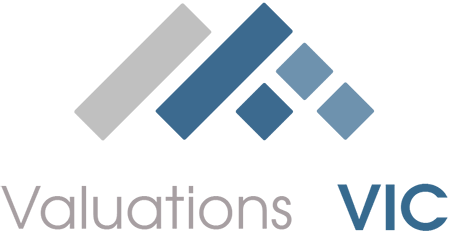
Buying a property can be challenging, especially if it’s a high-risk one that banks and money lenders are hesitant to finance. To understand why banks and lenders prefer certain properties we must first explore the common challenges they face when financing high-risk loans.
If you need help identifying high-risk property, you can get in touch with a property valuer in Melbourne.
Certain types of property are often considered less favourable for financing due to various factors like location, condition, and legal requirements. These include but are not limited to the following:
- Unconventional homes
- Multi-functional properties
- Vacant land
Don’t fret if you’ve decided to invest in a high-risk property. We’ll also look at alternative funding options available and strategies for successful financing.
The challenges of financing certain property types
Financing can get quite challenging if you’re not investing in conventional real estate. Particular properties in the commercial sector, fixer-upper and vacation homes are less favourable by banks and lenders. This makes it harder for property buyers and investors to secure funding.
Let’s analyse the reasons behind what makes certain properties less desirable for lenders.
Understanding financing challenges in the real estate industry
The real estate market is always changing. This is just one reason why lenders want to lower the risks to protect their investments. Borrowers must therefore meet strict underwriting guidelines and criteria to qualify for a loan.
The criteria taken into account include:
- Credit scores and history
- Income and debt-to-income ratios
- The property itself
The type of property, its size, location, and other factors also all impact a lender's willingness to approve financing.
Why are certain property types less favourable for financing?
Certain property types are considered high-risk and less favourable for financing due to a variety of factors. Here are two examples:
Commercial properties are seen as riskier investments because they can be more difficult to lease or sell if the borrower defaults on their loan. These include office buildings, warehouses, and retail space.
Vacation homes and property in remote locations are also less favourable because they are not primary residences and may not generate consistent rental income.
Which high-risk property types do banks and lenders avoid?
Apart from commercial real estate and vacation homes, there are other types of property that banks and lenders steer clear of and are hesitant to finance.
Houses bought at auctions for the purpose of flipping are considered high-risk because they require extensive renovations and may not be move-in ready by the time the borrower is unable to continue payments. This will make it harder to sell or rent.
Properties with specific legal or zoning restrictions, such as historic buildings and landmarks, are also less favourable because they may have more stringent rules for development, maintenance and repairs.
Why do high-risk properties pose a challenge for financing?
High-risk properties can pose a challenge because lenders need assurance. They are more likely to invest if they know that they can secure collateral and get their money back in the event of non-payment.
Since these properties are harder to sell and lease, it will be difficult for the lender to recover their investment. They also require more maintenance and repairs. This incurs extra costs for the borrower, furthermore impacting their ability to make payments on their loan.
What makes certain property types less favourable for financing?
The three most prevalent reasons why certain properties are less favourable for financing:
- Location and market demand
- Property size, condition and age
- Legal and zoning restrictions
Location and market demand are two major factors that can impact a property's appeal to lenders. Properties in areas with high demand and strong rental markets are more attractive because they are more likely to generate consistent income. Those in remote and low-demand areas may be less favourable due to their potential difficulty in generating income.
The size, condition and age of a property can also impact its appeal to lenders. Properties in need of extensive repairs or renovations are less desirable because they require more investment in upkeep and maintenance. Older properties may also have potential issues with outdated materials or building codes.
Legal and zoning restrictions can also impact a property's appeal to lenders. Properties with a landmark or historic designations, for example, may require more investment in maintenance and repairs to meet preservation guidelines. Properties with zoning restrictions or environmental concerns may also be less desirable due to potential liability issues.
Do banks and lenders prefer traditional property types?
Traditional properties are preferred because they are safer investments.
Freehold family homes and apartments in established neighbourhoods are the top two low-risk investments. They have a good track record of generating income and maintaining their value. Everyone needs a safe and secure home, so these properties are always high in demand with a guarantee of being easy to sell or lease if necessary.
How do traditional property types align with lenders' underwriting guidelines?
Traditional property types also tend to align with lenders' underwriting guidelines, which are designed to minimise risk and protect investments. These properties are typically easier to value and have less potential for legal or zoning issues.
Additionally, borrowers seeking financing for traditional property types are often more likely to meet lenders' income and credit requirements, making them better candidates for loans.
Alternative Financing Options for Non-Traditional Property Types
If your bank or moneylender is reluctant to approve your loan, there are alternative financing options available.
Here are two common alternative financing options:
- Community Development Financial Institutions (CDFIs)
- Crowdfunding
- National Emergency Management Agency funding
- Brownfield remediation loans
- Private financial institutions
Community Development Financial Institutions (CDFIs) specialise in funding projects that benefit communities. CDFIs offer flexible loan terms and are also more willing to work with borrowers who have substandard credit.
Many crowdfunding platforms that focus on real estate allow investors to accumulate money through private donations and public generosity. The funds accumulated can be used to finance a property investment that banks and moneylenders consider too risky.
There are also alternative financing options available for high-risk properties located in disaster-prone areas with environmental hazards too. The National Emergency Management Agency offers disaster assistance loans for homeowners and businesses affected by natural disasters.
In addition, some states offer brownfield remediation loans to developers looking to clean up and redevelop contaminated properties. These loans can help offset the costs of neutralising the environment and make it easier to secure traditional financing for the project.
Private lenders are another option for financing unconventional and high-risk properties. Short-term loans are offered with higher interest rates and more flexible approval criteria than the everyday bank. You’ll need a clear plan and offer collateral in the form of other assets like property or equipment. This will help you secure the loan.
Strategies for Successful Financing of Unpopular Property Types
There are several strategies to increase your chances of being funded if you're looking at unpopular and high-risk property that ordinary lenders may consider unpopular or high-risk.
One strategy is to minimise the risks. For example, if you're looking to finance a property located in a flood zone, you can invest in flood insurance to bolster your lender’s confidence.
Another strategy is to invest in security measures like alarms and surveillance cameras. These are excellent features for properties located in high-crime areas.
The following also has the potential to increase your chances of securing finance:
- Improving your credit score
- Drawing up a solid business plan
- Having a clear understanding of the property's value
- Being aware of future developments
Working alongside an independent property valuer can help you navigate your way to finding a better property if need be.
Summary
High-risk properties are less favourable by most banks and lenders, but there are alternative financing options available. These include CDFIs, crowdfunding platforms, private lenders, and the National Emergency Management Agency.
Buyers and investors should explore all financing options available, mitigate risks associated with high-risk properties, and work with an expert in non-traditional or high-risk loans. By following these strategies, the chances of securing financing and successfully investing in non-traditional, high-risk properties are higher.
Financing unconventional property can be a daunting task, but with tenacity, it is possible to secure funding for your dream property.
Contact us for more information on property types that are least favoured by banks and moneylenders.







